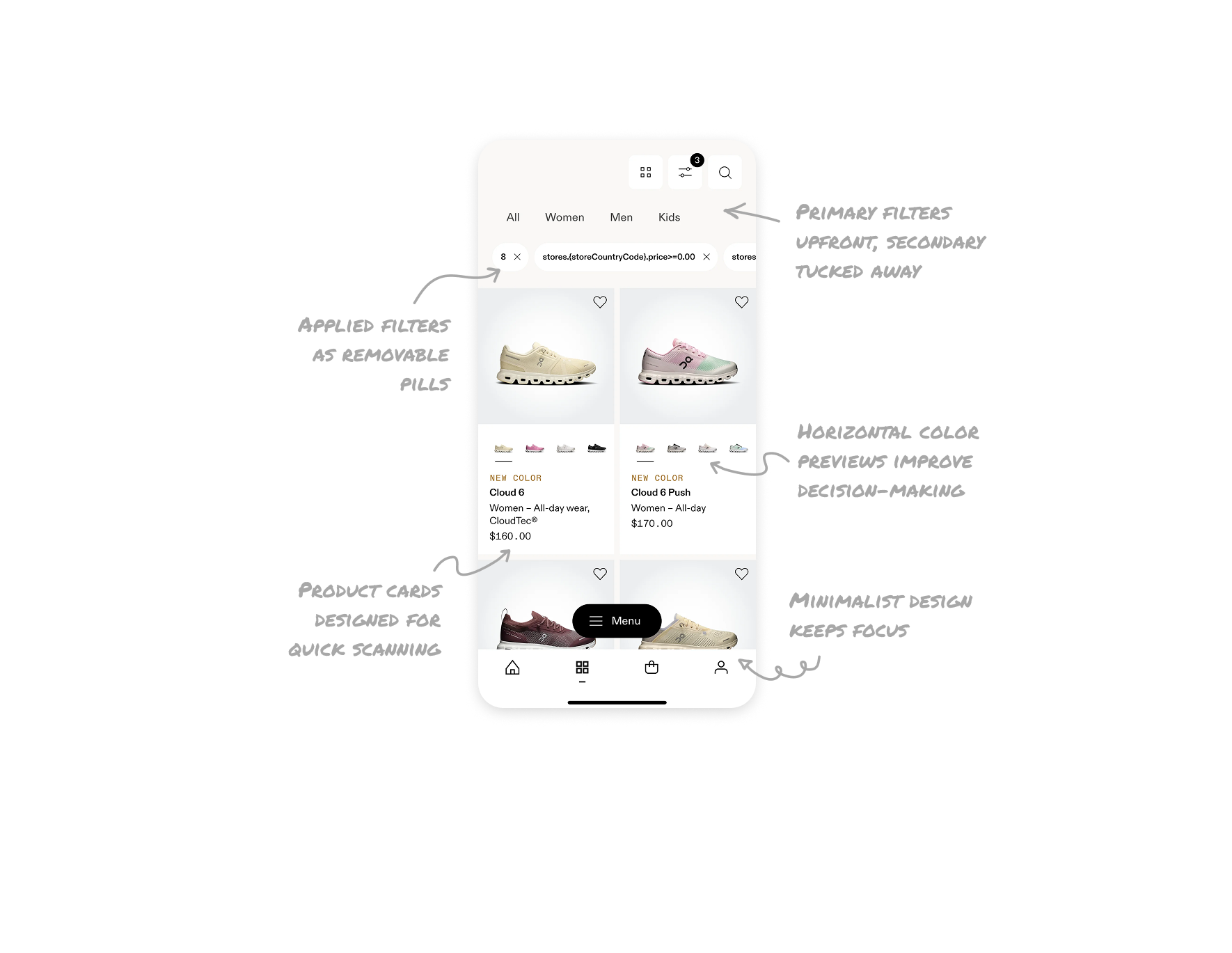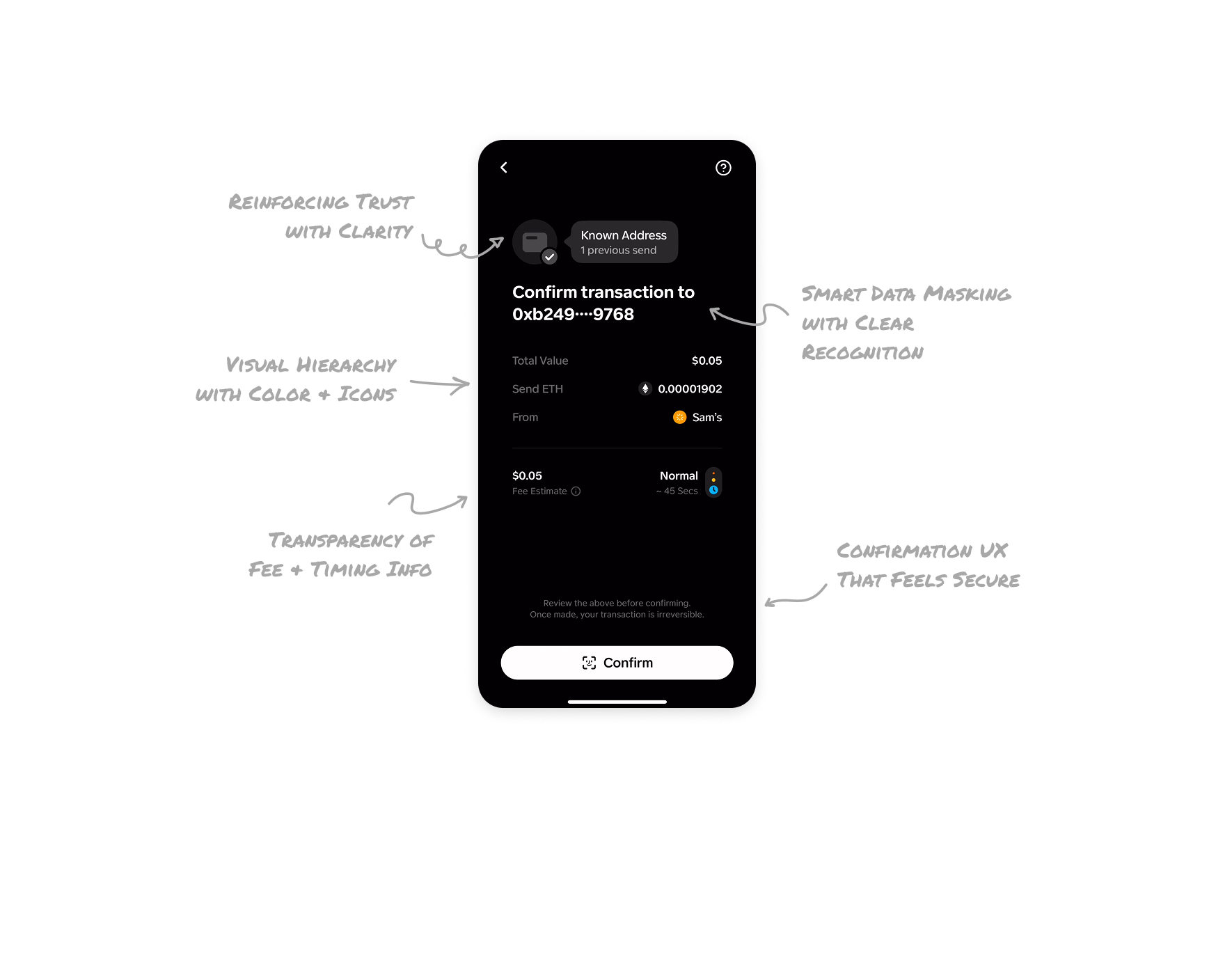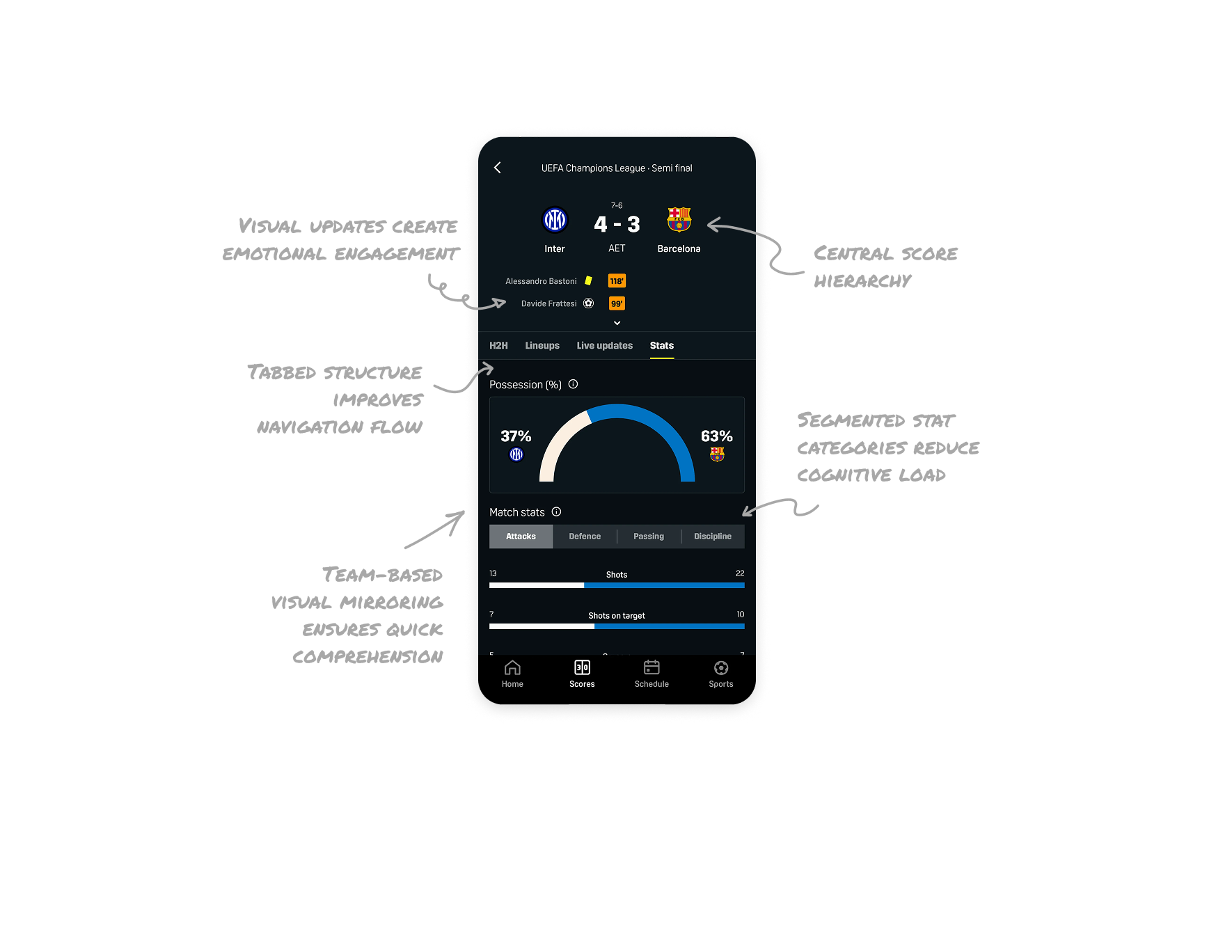5 UI/UX Lessons from MyFitnessPal Dashboard - MyFitnessPal UI Breakdown

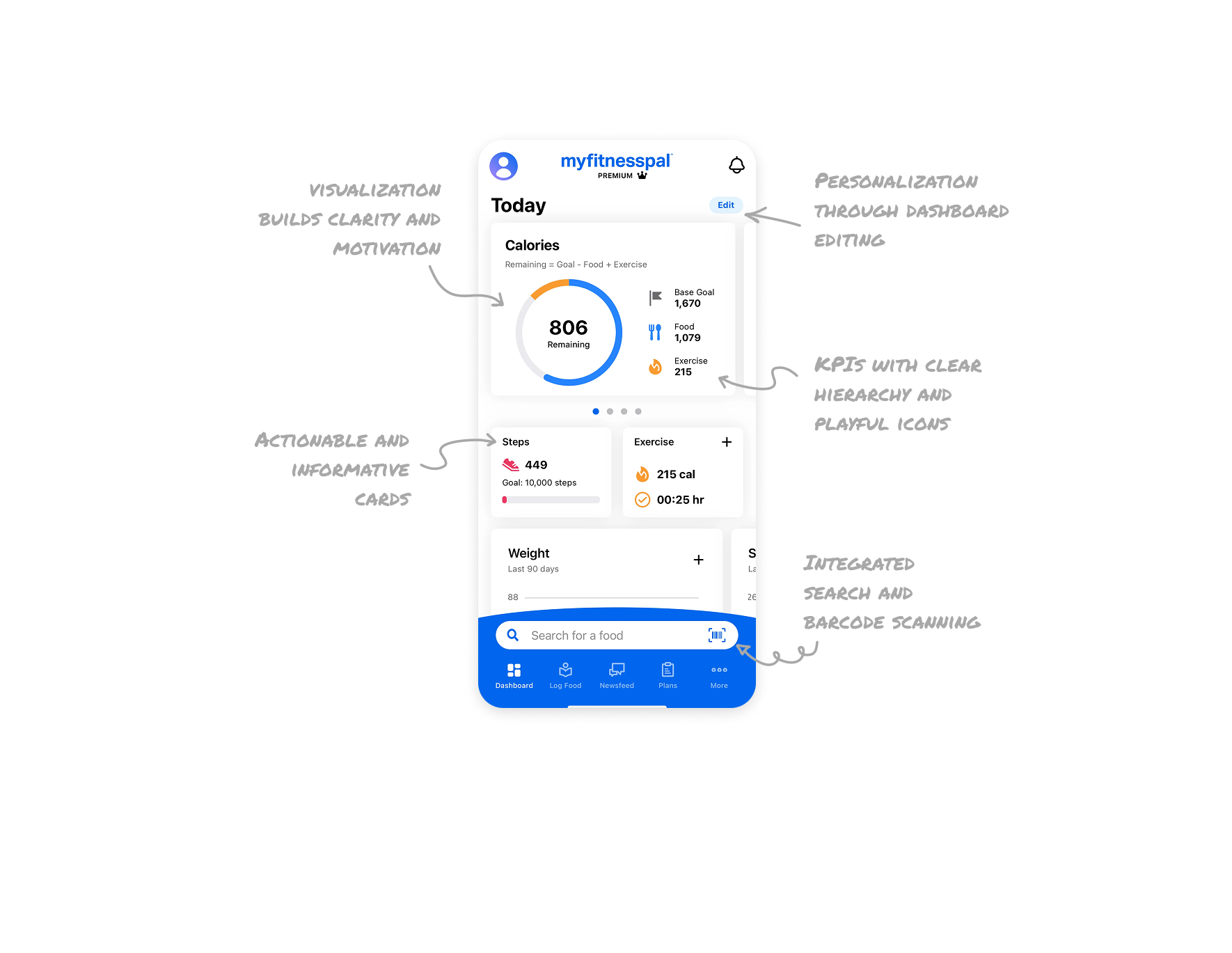
Progress visualization builds clarity and motivation
The circular calorie ring is instantly scannable and shows remaining balance with color-coded progress. Pairing it with the exact equation (Goal – Food + Exercise) gives transparency and trust, making the data easier to understand and actionable.

KPIs with clear hierarchy and playful icons
Calories, food, and exercise stats use bold typography with colorful icons. This reduces cognitive load and makes critical numbers quick to interpret. The mix of icon + text anchors meaning without clutter.

Personalization through dashboard editing
The “Edit” button at the top allows users to tailor the dashboard to their preferences. Giving control over what data is visible makes the experience feel personal and prevents irrelevant information overload.

Integrated search and barcode scanning in the nav
Unlike many apps that separate search, MyFitnessPal integrates it directly into the bottom nav. The addition of a barcode scanner streamlines food logging, lowering effort and making healthy choices easier in the moment.
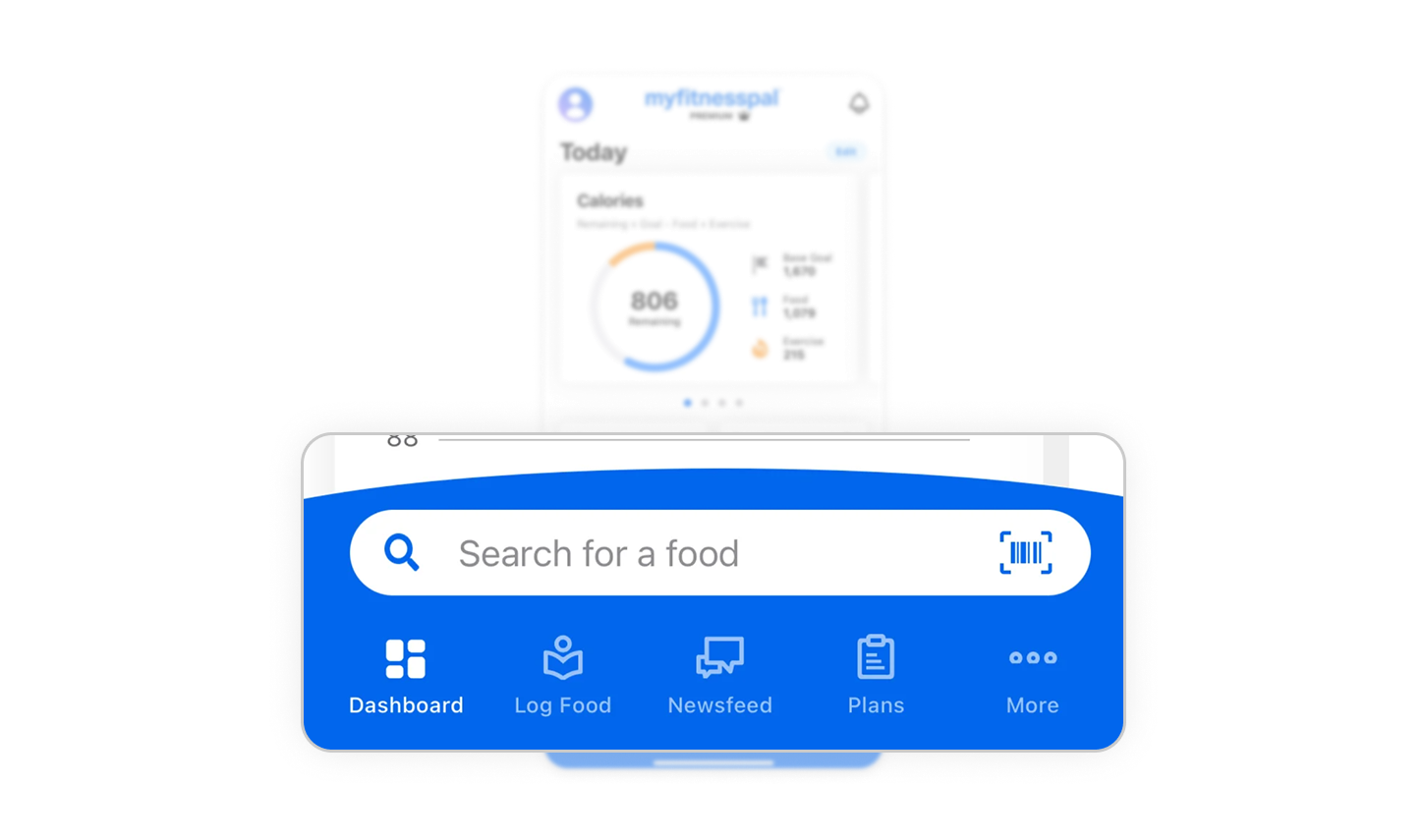
Actionable and informative cards
Step and exercise cards provide progress at a glance while remaining interactive. Progress bars and calorie/time metrics make them useful as summaries, and tap-to-log turns them into entry points for deeper actions. This dual role balances information and usability.

Similar Breakdown Lessons
